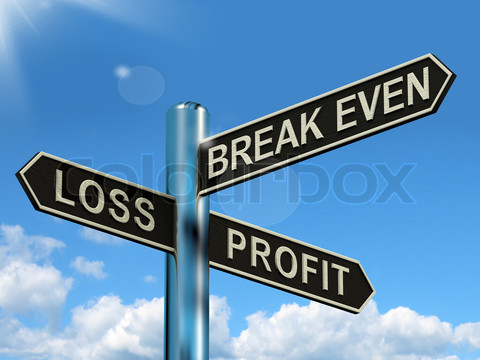18 Sep 2011
Is Bottled Water Making You Stupid?
Bottled water is THE most profitable drink product in the world, selling for 3000 to 9000 times what you pay for the perfectly safe, inexpensive liquid that comes out of your tap at home.
To put this in context, paying $2.40-3.90 for a 750ml bottle of water is equivalent to:
• $10,000 for a tuna sandwich at your local cafe or
• A bill from your water company this month for $3000/tonne of water (as opposed to the going rate of $1.2/tonne)
According to the Australasian Bottled Water Institute, Australians consume over 250 million litres a year at a price of $385 million. We have been systematically brainwashed by the beverage industry to believe that our tap water is somehow unsafe or insufficient – look around and you will see that there are now hundreds of brands competing for your attention with clever marketing campaigns designed to scare, seduce and mislead you to part with your hard earned money.
Despite its association with prestige, purity and pristine conditions, bottled water is often no better than tap water (in terms of taste and cleanliness) and the production process it is extremely harmful to our environment.
Did you know that:
• For every 250 million litres of bottled water, it takes 125million litres of oil to produce the plastic bottles, refrigerate and ship them from one part of the world to another
• For every litre of bottled water sold, another 2 litres are used up in the production process
• More than ½ of the brands on the market are derived from municipal water supplies, despite the fact that the packaging would lead us to believe they come from unspoiled mountain streams or underground springs
• Over 80% of the bottles end up in landfills and are never recycled
It is estimated that bottled water has become a more than $45 billion dollar industry worldwide. Surprisingly, 97% of it is consumed in countries which have plentiful sources of clean, safe drinking water. We can afford to turn our noses up, avoid the tap and fork out millions for bottled water: our choice however is purely a lifestyle one. A lifestyle choice for us with life and death consequences for others and our planet.
For 2.6 billion people in the developing world, lack of clean water and basic sanitation is a life or death situation. It is estimated that half of the people in the developing world are suffering from diseases associated with inadequate water or sanitation and that 5 million people die each year. According to the International Water Management Institute, clean water and improved sanitation could be provided to everyone on earth for an outlay of $11 billion a year (less than a quarter of our global $45 million spending on bottled water), yet to date, there has been no impetus to re-channel the money and change our thinking on this important issue.
So you may be sitting there and thinking, what does this mean for YOU and your business?
Well, nothing… and yet perhaps, everything.
How often have you (or someone else in your team) said:
• “if we had more money, we could invest in X and improve our business?”
• “if we put our prices up by 10%, we will lose customers.” or
• “we can’t afford to buy X because it’s too expensive.”
You already have enough money to do and buy all of the things that you need – it’s simply a matter of common sense and priorities. We are all affluent in this country: It is your mindset and your language which is lacking, not your bank account.
In fact, each and every day you and I waste money by overpaying for bottled water and other convenience/impulse items. We rarely stop to think about the true value of what we got vs. what we paid. Bottled water is just one obvious example and it is not difficult to see how this might be playing out in other areas of our lives.
You and I have happily overpaid for products. Yet we struggle to charge what we are worth or put our prices up because we fear that no one will buy. Isn’t that interesting?
Perhaps you and I need to take a lesson from the bottled beverage industry and focus on how we are marketing and selling our products/services? Is fear more powerful than selling benefits? Is perception more influential than reality? Are you seducing your customers with sizzle or merely putting them to sleep with your low prices?
Think about it. Beverage companies have managed to package and sell to us something that is practically free and plentifully abundant, for thousands of times what it is worth. And up until now, we have all paid willingly. Bottled water has in fact made us all look a bit foolish.
Maybe it’s not the price you are charging that is the problem? It’s the way you are choosing to promote your product/service. The best time to change your mindset and your approach is now. Anything is possible.
Article Source: http://EzineArticles.com/4936397
Knowing exactly where you stand financially – i.e. your cash position – means that you don’t have to wonder “do I have enough money to cover my rent and wages this month?” The health and vitality of your business are dependent upon your ability to cover all tax obligations, payments to suppliers and operational expenses as they come due in your business.
Unfortunately, knowing where you stand is not as simple as looking at your bank balance or your net profit. Your bank account merely shows your cash on hand but it will never tell you what your cash flow is or (more importantly) HOW to improve it.
Cash and cash flow are not the same thing. Cash flow is about the movement of cash in and out of your business as it operates over a period of time.
This distinction is crucial to your success – if your company is profitable on paper yet it maintains a negative cash flow for an extended period of time, eventually it will go under.
But what does this mean for you and your business?
Essentially it means that, “cash flow is King”. You cannot afford to run your business by simply printing and looking at your Income or Profit and Loss statement each month. Being able to calculate and monitor your cash flow position regularly is critical to your company’s health and survival. You can have the most brilliant product or service but if you don’t have positive cash flow, your business will eventually go under.
If you want to learn more about this topic “Finding the Point in business” – improving both your profitability and cash flow, I recommend that you check out Chapter 1 of Financial Foreplay®.
That’s The Good News, Now Do You Want To Hear The Bad News?
If you do a quick search on the internet, you will uncover hundreds of experts, coaches, accountants, journalists and government organizations that quote the statistic “8 out of 10 business fail in the first year”. However, the fact that the statistic is widely touted doesn’t necessarily mean that it’s true or backed up by empirical evidence.
So what is the truth? I searched the internet and couldn’t find confirmation of any study that was done to back-up this statistic (that 8 out of 10 businesses fail) by a reputable or well-known bureau. What I did in fact find was some evidence to the contrary. According to credit reference checking agency Veda Advantage, only a small percentage of new businesses close in their first 12-months of business.
What is the exact amount, you ask? Would you believe, less than two percent?
However, they assert another 32 percent close their doors between their second and fifth year of operations, while 21 percent wind up between the sixth and ninth.
So, that is the good news. However, as you can probably guess, it’s not ALL good news.
Just because a start-up doesn’t go under in the first 12 months, doesn’t mean that the owner is running a successful enterprise. I wonder if anyone has bothered to measure how many of the businesses who survived:
- Paid the owner a wage that was at least equivalent to what he/she could have earned elsewhere as an employee?
- Generated a profit and positive cash flow? and
- Had enough working capital to service their debt, pay taxes and suppliers etc. as they came due?
The first few years of business are incredibly risky. In working with hundreds of business owners, we have found that the large majority opt to forgo their salary or inject more equity to prevent them from going under prematurely. What this means is that, while they may not have “technically” gone under, these fledgling enterprises are far from commercially viable and successful.
Statistics can be both helpful and misleading at the same time. It is easy to assert figures but more difficult to substantiate their veracity or explain the implications thereof.
The author of an article or press release will often use statistics to capture your attention and motivate action. That’s why people use statistics – numbers are persuasive and have an aura of authority. A statistic like – 8 out of 10 businesses fail – gets attention, doesn’t it? Whether this data is accurate or not, is only half the story. As a business owner or manager, we must look deeper to find the insights that we can take away and use to improve our results.
Personally, I don’t care what percentage goes under. No matter how long you’ve been operating, if you’re not getting paid a salary, producing profit and generating positive cash flow, you’re not running a successful company. Closing your doors is only half the story. The doors may very well be wide open, but technically, no one is there.

Rhondalynn Korolak, Author of Financial Foreplay® and On The Shoulders of Giants
Discipline and attention to details is more important than ever if you want to succeed in challenging economic times. Take a look around… competitors are closing their doors – which means more potential customers for the businesses that DO survive. And in times like these, it’s going to take more than “thinking outside the box” and goodwill with existing customers to secure the survival of your business.
You may have been lucky over the past few years – you may have found it possible to operate without a detailed, written plan and systems/processes. But the global economic crisis has changed all of that. If you want to thrive, there is only one thing that is for sure – uncertain times call for deliberate decisions and proven practices.
So here are & top tactics to recession-proof your business.










